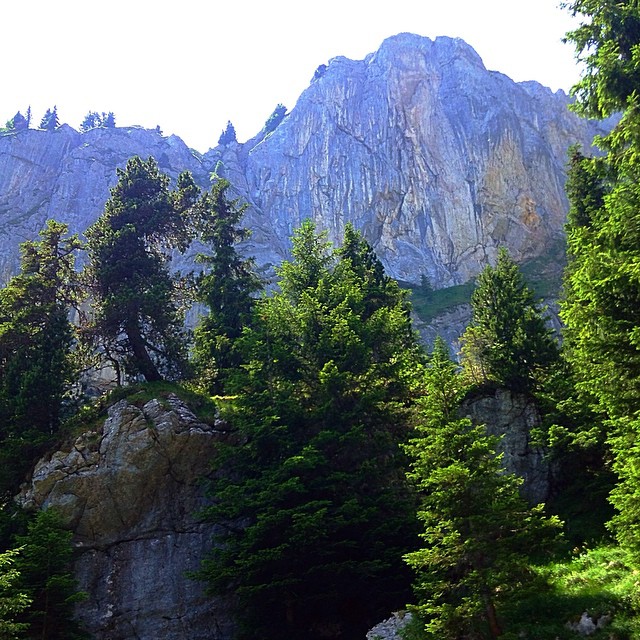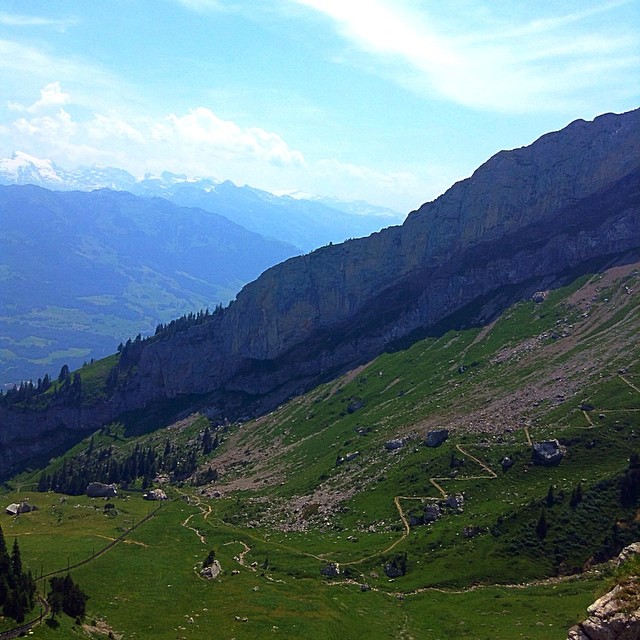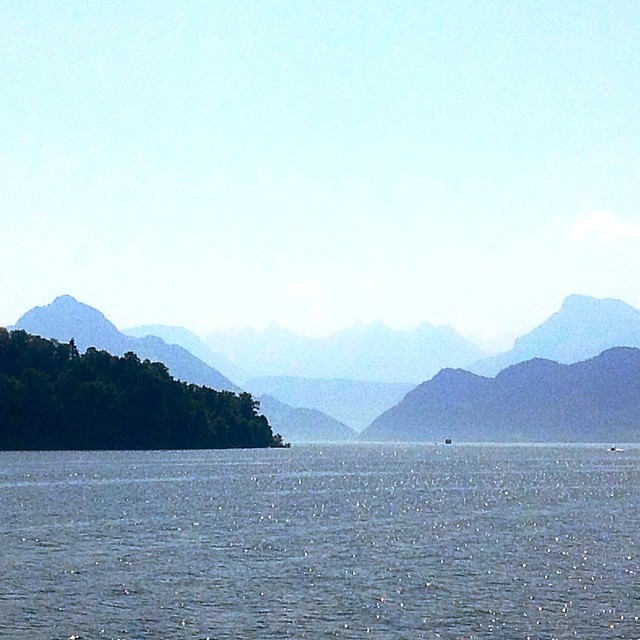LUCERNE, SWITZERLAND. 1421.
It’s summer, when the snows have finally receded back into the fang-like peaks of Mount Pilatus. The small lakeside village rests peacefully in its foothills, quiet and picturesque. A farmer is out today, taking advantage of the longer day and the cool afternoon breeze to get some work done, maybe earn himself an extra half hour of sleep in the morning.
The evening was a cloudless one, so he’s startled when he looks up from the dirt, trying to discern the source of the massive shadow passing over him. What he gets is a glimpse, but tomorrow he’ll have details galore for anyone who’ll listen. He’ll talk of claws the length of a man’s forearm. Of scales and shimmering wings. He’ll talk until the name Pilatus is forever paired with one idea: Dragons.
Flash forward another six hundred summers. My American family of five are crammed inside a metal trolley traveling up the face of Mount Pilatus on a thin line of track. Based in Heidelberg, Germany, yesterday we all jumped into the car my father rented for our summer-long stint across the pond and crossed the Swiss border on the run from the most brutal heat wave in German history. An ocean away from our air-conditioned South Carolina home, we decided a weekend was needed where no one was sprawled out amid a garden of electric fans. We needed a memory, preferably one spent somewhere at least twenty degrees cooler.
We agree that the snow-capped Swiss Alps would do, and now as I stare out the window of the trolley, I know I’ll never forget what I see. I look behind us, back at the now bolstering city of Lucerne shrinking into a cluster of specks as we climb higher and higher, to where the temperature drops below 40 degrees Celsius for the first time in weeks. The lake we’ve just crossed by ferry is a sheet of crystal, winking rays of midday summer sun up at us as we tick, tick, tick, up the strip of track.
I haven’t heard any of the local legends yet, but staring into the caves and crags that litter Pilatus’s slate-grey face makes it easy to imagine a pair of fiery eyes staring back at me. The sense of magic in the land is innate. I’m taken to every fantasy world I’ve ever immersed myself in—Narnia, Middle Earth, Westeros—trying to find a way to describe the feel of it. Old. Wild. Untouched, even though it still carries everything befitting a tourist trap.
There are gift shops. Restaurants. They sell copies of a children’s book of dragon stories in French, English, and German that can only be purchased at the summit. It’s what you’d expect, but it’s a different kind of commercialization. Not the unrelenting, aggressive, everywhere-you-lookness of an American carnival attraction. Sure, there are zip-lines and rope courses. But there are also families that have herded cattle on the mountain for centuries. There are t-shirts and key chains and post cards, but unless you buy one that’s not what you remember the place by.
I’ll never forget this, I think again later that day, this time staring down at the rocks and hills from inside a cable car as we’re lowered back down into the real world. There are para-gliders above is, floating around thousands of feet in the air. Seeing how the sun shines through the colored silk of the parachutes, I can’t help but imagine them as wings.
Dear Reader: This page may contain affiliate links which may earn a commission if you click through and make a purchase. Our independent journalism is not influenced by any advertiser or commercial initiative unless it is clearly marked as sponsored content. As travel products change, please be sure to reconfirm all details and stay up to date with current events to ensure a safe and successful trip.


